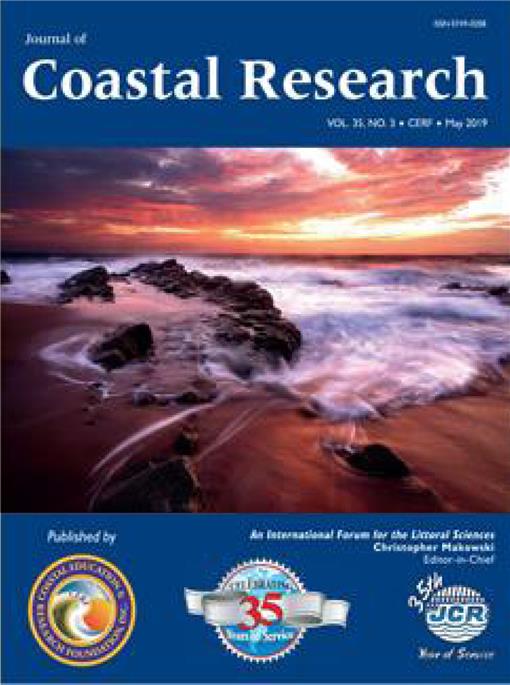Ajedegba, J.O.; Perotto-Baldivieso, H.L., and Jones, K.D., 2019. Coastal dune vegetation resilience on South Padre Island, Texas: A spatiotemporal evaluation of the landscape structure. Journal of Coastal Research, 35(3), 534–544. Coconut Creek (Florida), ISSN 0749-0208.
Vegetation is critical for coastal dune building and stabilization. However, dune vegetation can suffer significant damage from coastal hazards such as hurricanes, anthropogenic disturbances, and tidal flooding. The goal of this study was to evaluate the spatiotemporal dynamics of dune vegetation at South Padre Island, Texas, and to use changes in the landscape structure to better understand dune vegetation recovery from the impact of the 2008 Hurricane Dolly and overall dune vegetation resilience. Remotely sensed imagery was used in the format that was publicly available as Digital Orthophoto Quarterly Quadrangles captured from 1996 to 2016. Landscape metrics were used to quantify dune vegetation spatial structure and changes in the amount of and spatial distribution of dune vegetation. Results from classified images before and after Hurricane Dolly showed only a 5% decrease in dune vegetation cover in the 0.5-km2 study area; however, there was a 48% decrease in patch density (from 6890 patches/100 ha to 3589 patches/100 ha) and a 25% decrease in edge density (from 2035 m/ha to 1521 m/ha), respectively. The less aggregated vegetation on the seaward side was more vulnerable to hurricane impact than the larger and more aggregated patches shielded by the crests of foredunes. Despite the disturbance of the 2008 Hurricane Dolly, vegetation cover in this dune region gradually increased by 38% from 1996 to 2016. Aggregation and the largest patch indices also increased during this period. Patch density decreased between 2004 (10,075 patches/100 ha) and 2016 (3605 patches /100 ha) after an initial increase from 1996 (3594 patches/100 ha). Growth trends pre– and post–Hurricane Dolly were strongly correlated, suggesting dune vegetation recovery and resilience. Overall, South Padre Island dune vegetation has appeared to maintain a steady increase in productivity over the last two decades regardless of routine tidal incursions.





